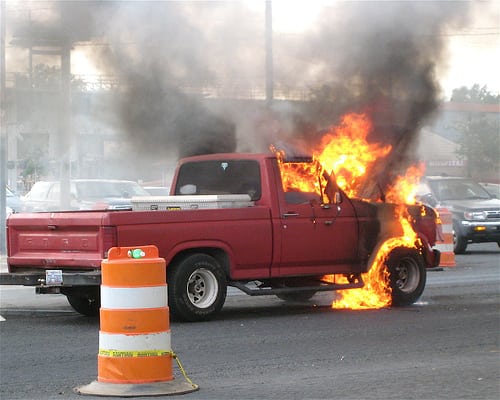Identifying and Treating Burn Injuries
 *Article Updated June 2022
*Article Updated June 2022
As personal injury attorneys, we meet many victims who have suffered serious burns, and we handle cases involving burn injuries and deaths caused by burns, fires and explosions. Burn injuries are often catastrophic, permanent, and physically and emotionally devastating. They require expert medical attention and doctors dedicated to treating burn injuries. They may require rehabilitation and special devices to assist the victim. We refer to and use some of the best medical providers available, right here in Southern California.
Interestingly, an odd but very dangerous thing we see happen from time to time after a burn injury occurs is failing to get medical treatment. Many people, especially if untrained in handling emergencies, don’t know how to treat a burn or whether a burn requires medical treatment. Victims of car accidents, camping accidents or accidents in someone’s home may not receive the medical attention they need immediately, and that may result in complications, infections and other problems that may cause the wounds to increase in severity over time, even to the point of losing a body part or being fatal.
What’s the Difference Between First and Third Degree Burns?
To help you distinguish a minor burn (first degree) from a serious burn (third degree), determine the extent of damage to the body tissues. Medical literature tells us what the differences are from the three classes of burns:
First-Degree Burns
These injuries are described as the least serious, with only the outer layer of skin being burned, though not all the way. The skin is typically red, and there is often swelling. Certainly, a first-degree burn can be painful. Literature tells us a first-degree burn may be treated as a minor burn unless it involves substantial portions of the hands, feet, face, groin, buttocks, or a major joint. In these situations, emergency medical attention is required. We think emergency medical attention is the best option with any burn.
Second-Degree Burns
If the first layer of skin has been burned through and the second layer of skin is showing and is also burned, the injury may be described as a second-degree burn. Second-degree burns often show blisters and an intensely red, splotchy appearance. There is often severe pain and swelling with this type of burn.
If a second-degree burn is less than three inches in diameter, doctors report they may be able to treat it as a minor burn. If it is larger than three inches or is on the hands, feet, groin, buttocks, or a major joint, emergency medical help should be obtained as quickly as possible.
For more on how to treat minor first and second-degree burns, visit the Mayo Clinic website for first aid information.
Third-Degree Burns
Third-degree burns often result from a car accident, electrical shock, or work accident. They can also result from barbeque accidents and other accidental events at home, on vacation, or at the worksite. They are the most serious type of burns, are defined as involving all layers of skin, and definitely can cause permanent damage to the tissue. Fat, muscle, and even bones may be affected. For any severe burns, whether or not they meet the description above and/or appear charred black or dry and white, call 911 immediately.
It is reported that, until an emergency response unit can arrive to control the scene, the following precautions should be taken:
- Don’t remove burned clothing, but do ensure that the victim is no longer in contact with any smoldering materials or near heat.
- Don’t immerse large, severe burns in cold water, as this could cause a drop in body temperature.
- Check for signs of circulation, and CPR may be indicated if none are found.
- Elevate the burned body parts if you can do so without causing further damage, raising them above heart level if possible.
- With a cool, moist, sterile bandage, lay it over the area of the burn. If a bandage is not available, a clean, moist cloth or towel is said by some to be an acceptable substitute.
At Heiting & Irwin, we hope you are never involved in or have to witness a serious burn accident. If you do, however, it is best for everyone if you know how to identify burns and treat them accordingly, and who to turn to for appropriate medical and legal care.
This article’s photo comes courtesy of Flickr contributor, Ted Abbott
